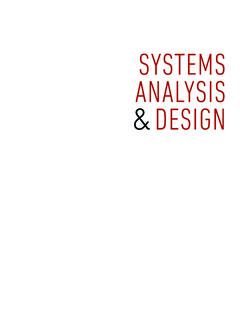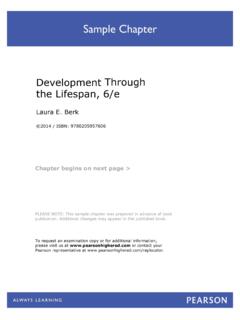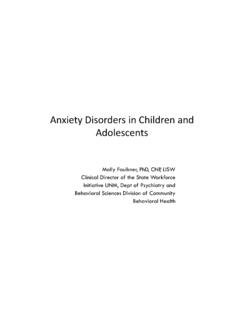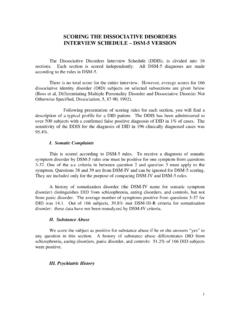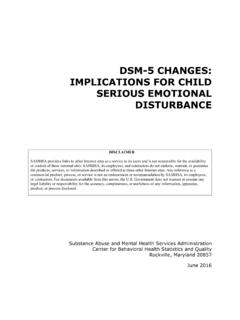Transcription of Diagnosis and the Social Work Profession - Pearson
1 1. Diagnosis and the Social Work Profession Competencies Applied with Practice Behaviors in this Chapter Professional Ethical x Critical x Diversity in Human Rights Identity Practice Thinking Practice and Justice x Research-Based Human Policy Practice Engage, Assess, Practice Behavior Practice Contexts Intervene, Evaluate Henry Williams, a 59-year-old African American man, was in the hospital after undergoing surgery for removal of a brain tumor. His past medical history included seizures, insulin- dependent diabetes mellitus, and pancreatitis (an inflammation of the pancreas that causes intense pain in the upper abdomen). Currently, Mr. Williams was taking several medications, including Dilantin (used to treat epilepsy), insulin, and steroids (to decrease swelling around his tumor). About six days after the surgery Mr. Williams woke up in the middle of the night and was very loud in casting the demons out, as he called it.
2 The nurse tried to calm him, but Mr. Williams was so incensed that he picked up a small monitoring machine next to his bed and threw it at her. Security officers and the on-duty physician assistant were called to calm the patient. The next morning the neurosurgery team requested a psychiatric exam, but because it was a Friday Mr. Williams was not examined until the following Monday. His family visited over the weekend, and he repeatedly became agitated, even accusing his wife of cheating on him. He was upset and emotional during those visits, and it took him a while to calm down after his family left. On Sunday night, Mr. Williams got up at midnight and threatened his roommate. Mr. Williams yelled that his roommate was cheating on him with his wife and they were plotting to kill him. Because his roommate feared for his safety, he was moved to another room, while the nurse tried to calm Mr.
3 Williams. When the psychiatric team, accompanied by the Social work intern, finally examined Mr. Williams, he said he felt great but was hearing voices, most prominently that of his 1. 1 8/30/11 12:19 PM. 2 Part One: Assessment pastor. He reported that he saw demons at night and was attempting to fight them off. He also stated that he thought someone wanted to kill him to benefit from his life insur- ance policy. In addition, Mr. Williams told the psychiatrist that his wife had not come to visit him for some days (this was not true; she had been there twice over the weekend). but that his son had been at his bedside in the morning and that he had enjoyed the visit. Mr. Williams's wife heard about the incident with the roommate and said she would not take Mr. Williams home because she was afraid of him. She told the Social work intern that Mr. Williams had behaved similarly in the past.
4 She would sometimes wake up in the middle of the night and find him standing next to the bed or leaning over her body, staring at her. When she confronted her husband, he would pass it off as a joke, saying he was making sure she was really in bed and had not gone out. (They had separate bedrooms.) She also told the intern that although she had never cheated on her husband, he had had an affair several years ago. After she found out, they went to marriage counseling together, but the marriage had been rocky ever since. The case described earlier is one in which the client, Mr. Williams, appears to have a mental disorder. Almost half of all Americans ( ) meet the criteria for a mental, emotional, or behavioral disorder sometime during their lives (Kessler, Berglund, Demler, Jin, & Walters, 2005). The various disorders are catalogued and described in the Diagnostic and Statistical Manual of Mental disorders (DSM), published by the American Psychiatric Association (APA).
5 The DSM is the standard resource for clinical Diagnosis in the United States. The first edition of the DSM was published in 1952, and the manual has undergone many revi- sions during the last 59 years. The latest version is DSM-IV-TR (Text Revision) (American Psychiatric Association [APA], 2000), and another revision is planned for 2013. The definition of mental disorder in the DSM is a significant behavioral or psycho- logical syndrome or pattern that occurs in an individual and that is associated with present distress ( , a painful symptom) or disability ( , impairment in one or more important areas of functioning) or with significantly increased risk of suffering death, pain, disability, or an important loss of freedom (p. xxxi). A disorder .. must currently be considered a manifestation of behavioral, psychological, or biological dysfunction in the individual . (p. xxxi).
6 The DSM represents a medical perspective, only one of many possible perspec- tives on human behavior. The medical definition focuses on underlying disturbances within the person and is sometimes referred to as the disease model of abnormality. This model implies that the abnormal person must experience changes within the self (rather than create environmental change) in order to be considered normal again. In its desire to promote the objectivity of its manual, the APA does not recognize the notion of mental illness as a Social construction. A Social construction is any belief sys- tem in a culture that is accepted as factual or objective by many of its members, when in fact the belief system is constructed by influential members of that society (Farone, 2003). The medical Profession holds great influence in Western society, so when mental health diagnoses are presented as scientifically based disorders , many people will accept them as such.
7 Social constructionism asserts that many accepted facts in a society are in fact ideas that reflect the values of the times in which they emerge. The foregoing information may explain why the DSM classification system does not fully represent the knowledge base or values of the Social work Profession , which em- phasizes a transactional, person-in-situation perspective on human functioning. Still, the DSM is extensively used by Social workers, for many positive reasons. Worldwide, the medical Profession is preeminent in setting standards for mental health practice, and Social workers are extensively employed in mental health settings, where clinical Diagnosis is considered necessary for selecting appropriate interventions. In fact, Social workers account for more than half of the mental health workforce in the United States 2 8/30/11 12:19 PM. Diagnosis and the Social Work Profession 3.
8 (Whitaker, 2009). Competent use of the DSM is beneficial to Social workers (and clients) for the following reasons: Social workers are employed in a variety of settings, not just mental health agencies and facilities, where they meet people who are vulnerable to mental health disor- ders because of poverty, minority status, and other Social factors. No matter what their setting, Social workers should be able to recognize the symptoms of possible disorders in their clients and appropriately refer them for treatment services. The five-axis diagnostic system (which considers mental disorders , developmental disorders , medical problems, environmental stressors, and a global assessment of client functioning) provides the basis of a comprehensive bio- (Axis III), psycho- (Axes I, II, and V), and Social (Axis IV) assessment. An accurate Diagnosis facilitates the development of a suitable intervention plan.
9 The diagnostic categories enable Social workers to help clients, and possibly also their families, learn about the nature of the client's problems. Although some stigma is often attached to the assignment of a diagnostic label, many people take a certain comfort in learning that their painful experiences can be encapsulated in a Diagnosis . It validates their experience, lets them know that other people suffer from the same disorder, and offers hope that their problems can be treated. Use of the DSM allows practitioners from various disciplines to converse in a com- mon language about clients. The DSM perspective is incorporated into professional training programs of- fered by a variety of human service professions and portions of state Social worker licensing examinations. Insurance companies usually require a formal DSM Diagnosis for client reimbursement. For these many reasons, Social workers need to gain competence in DSM Diagnosis , and enabling them to do so is a major purpose of this book.
10 To that end, each chapter covers a particular mental disorder and is illustrated with two to three case studies on which readers can practice their skills and knowledge. Cases have been selected to repre- sent the diversity of people with whom Social workers intervene. The disorders chosen for this book are those that Social workers may see in their employment or field settings and that have sufficient research information behind them. For instance, reactive attachment disorder is not included, even though child clients may carry this Diagnosis , because there has been little research on the disorder itself, despite the fact that many data have been gathered throughout the years on attachment theory and attachment styles. We will now turn to an overview of the DSM multiaxial classification system, using the case that opened the chapter as an illustration. (We note that the next edition of the DSM may include significant changes to the classification system, possibly reducing the number of axes used [APA, 2010]).





